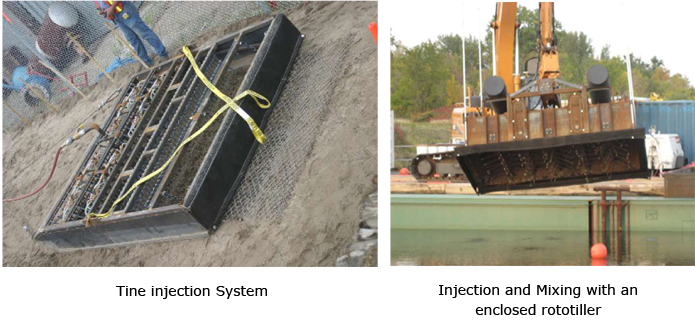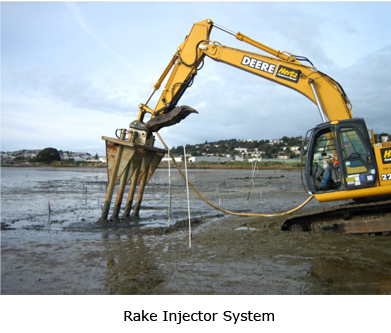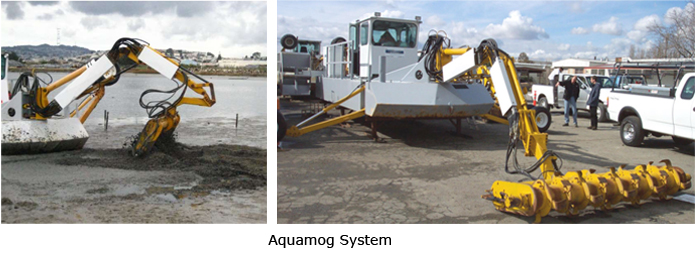|
An advantage of the system used at the 2005 Hunters Point placement was that the contractor was able to record data such as slurry flow rate, slurry density, pump time, and slurry volume pumped into each test plot; this provided the data necessary to demonstrate that the requisite carbon mass has been added to test plot. This disadvantage of this equipment was that the equipment was restricted to intertidal areas, and that the total weight of the equipment limited the application to areas where the sediment was sufficiently stable to support the equipment weight.
Injection and Mixing Systems
Custom systems for injecting and mixing GAC were developed and tested for the 2006 Alcoa Grasse River pilot project (Beckingham and Ghosh, 2011; Patmont et al 2015). GAC (particle size 75-300 µm) was added to sediments at a target dose of 3.75% by dry weight to the top~15 cm of surficial sediment as a slurry by three modes of amendment: (1) mixed using an enclosed tilling device, (2) layered without mixing, and (3) injected into surficial sediments using two rows of hollow tines. Two types of GAC were also tested at this site: bituminous coal-based AC, and a coconut shell-based AC.

Additional Resources
ALCOA 2006 Grasse River Activated Carbon Pilot Study. ALCO Grass River Project web page.
In situ sediment treatment using activated carbon: A demonstrated sediment cleanup technology. Patmont et al., 2014.
|





